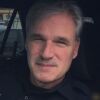America’s police officers have been taking some hits lately. Whether it is biased media coverage on use of force or widespread anti-police protests, many police leaders may be wondering what can be done to reverse this negative trend.
An important area where police leadership could make an impact on the public’s perception of police and on the safety of their constituents is a radical rethinking of traffic law enforcement. The current model — where officers are often pushed to meet ticket quotas to generate revenue used to support city and court budgets — needs to change.
This standard has too often caused the public to perceive officers as de facto tax collectors and has put an unreasonable financial burden on the driving public. It is a big reason that more voters are tossing traffic cameras out of their cities because they see them for what they are — a revenue generator.
Four Simple Steps
The bold realignment that is needed is really quite simple. First, all money generated from fines would go into a separate budget which can only be used for traffic safety. This can include more rumble strips on roads, better street lighting, improved signage, and more guardrail protection at dangerous curves. Although receiving a ticket will never make a driver happy, a driver may feel somewhat better knowing that the fine will be used to improve roadways.
Second, all traffic fines should be reduced with an exception for more egregious violations. These fines can be a real drain — especially for drivers who are poor. Often times, drivers simply cannot afford to pay their fines, resulting in warrants for their arrest. This issue has caused people who are generally law-abiding citizens to become desperados until they can pay an exorbitant fine.
Guess who gets to arrest them and place them in a degrading situation when they can’t pay? That’s right, police officers! Don’t think for a moment that this hasn’t caused some of the officer/citizen friction we currently see.
A third component is to discourage any quota system. It seems that cops only have quotas for tickets. We have a drug problem in this country but we don’t demand officers arrest a certain number of people for heroin possession each month. Cops appreciate their role in trying to change driver behavior for the better but don’t like being pressured to write tickets. Cops are a suspicious type and recognize phony when they see it — which is essentially what so many of these quotas are.
Finally, in the vein of community policing, officers should be used more as educators to teach young drivers about the perils of speed and dangerous driving. We reach out to little kids in Safety Town programs but should be more active in school driver instruction programs. These efforts can help develop harmony with teenagers who are at an age when they may begin to develop negative opinions about cops based on music, social media and other outlets.
Improving today’s police-community relations can be an expansive effort that will take time, but a transformation of our current enforcement model is a good start.


